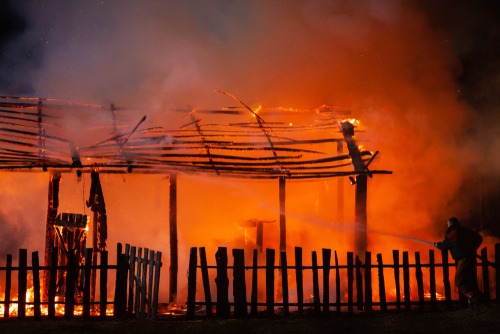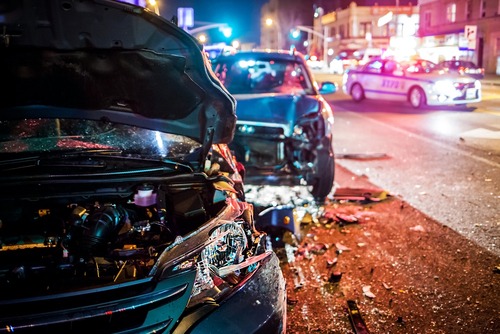
Collapses, Fires, and Explosions in Construction
Construction work zones can be a dangerous place, especially when safety precautions go unconsidered and workers are put at risk of encountering hazards. Even though some accidents are bound to occur more than others, all types of accidents need to be looked at on a larger scale. This is why it is important to consider the injuries and risks attributed to collapses, fires, and explosions in the construction zone and how you can protect yourself from these unsightly accidents.
Building Collapse
One of the most deadly accidents that can occur in a construction workplace are collapses, not just limited to buildings. No, you may see collapses happen in many aspects of the day-to-day construction lifestyle, such as buildings, decks, fire escapes, or even scaffolds. If the construction worker is lucky enough to keep their life, they may suffer catastrophic injuries that can cause them long-term misery depending on the circumstances.
Though many states believe in strict building codes for construction work, accidents happen as they will in any aspect of life. Many buildings may suffer from inadequate maintenance, design defects, or other hazards. Here are some of the main causes of a building collapse:
- Engineering/Design Flaws: Roof collapses and more can occur when poor designs and architectural failures are part of a construction project. A structure can collapse completely when it has been unstable for many years and continues to decline.
- Defective Building Materials: Sometimes, a construction company will use cheap materials to save on costs. However, this jeopardizes durability and can lead to a building collapse.
- Inspection and Maintenance Failure: Regular inspections must be conducted on buildings. However, what happens when a building owner does not keep up with these inspections? The neglect may lead to a collapse, ending in injuries or death in the name of negligence.
- Explosions/Fire Hazards: Owners must always make sure that gas leaks and hazards are addressed on building sites, as an explosion may lead to a collapse of certain structures.
You may wonder what parties are at risk when a building collapses. A collapse in a construction zone can risk the lives of workers, passerby’s, and inhabitants of neighboring buildings around the construction site. Not only can those inside the building at the time become injured, but also the workers on scaffolds or ladders posing the risk of falling and receiving injuries, or those nearby when the building collapses. Surrounding buildings are almost guaranteed to be hit by debris and damaged or result in a secondary structural collapse. Building collapses can be prevented with proper routine inspections and when employers do not cut corners with their work.
For now, the Occupational Safety and Health Administration (OSHA) pushes general safety in construction for employers and their workers as well as conducting investigations where appropriate. Over the years, OSHA has been responsible for conducting many inspections in workplaces when negligence has been suspected. For instance, OSHA investigated a partial collapse of a building in December 2012 in New York. The building consisted of five townhouses and was being constructed when the front 20 feet of the floor collapsed over the third floor. This caused the floors below to become pancaked, and one worker was killed as well as another injured. OSHA believes that, as safety measures are taken and properly followed, more accidents can be prevented and workers can remain safe.
Fires
Construction site fires are another common problem in many workplaces, for all types of reasons. Each year, an estimated 4,800 construction site fires cause $35 million in property loss. The problem? Many times, a construction worker will leave an open flame, resulting in massive fires that not only cause injuries and fatalities, but also disrupt the day-to-day progress of construction work for many. These fires cause millions in property loss at any given time. You may be astonished to find that some of the largest causes of these fires are careless smoking, sloppy maintenance on electrical tools that could have been prevented with better training, and faulty wiring. Furthermore, an employer may be to blame in some cases due to the fact that the employer takes shortcuts to get the job done quicker and ignores safety measures. Fire safety is taught at the worksite; however, this does not make it guaranteed.
There may be some questions to ask yourself in regards to fire safety in construction zones and prevention.
- Is the premises kept clear of all sorts of waste, such as what is flammable?
- Are metal bins provided for combustible waste materials, like oily rags?
- Is the construction zone readily accessible to firefighters?
- Are paint, lacquer, flammable solvents, thinners, and other flammables stores appropriately for the site location? Are flammable liquids handled only at a safe distance from possible sources of ignition?
- Is machinery regularly inspected?
- Are floors and walls prevented from becoming soaked with oil?
- If there are defects found in electrical equipment, how are they remedied?
- Is every employee aware of the means of escape from the premises if a fire starts?
- Are the right classes of extinguishers provided for the types of fire that may occur?
Explosions
There may be many explosion hazards on-site at construction zones. Some of the biggest reasons for these explosions are flammable chemicals and faulty wiring. Each year, approximately 24 construction workers will due in explosions, according to the Bureau of Labor Statistics. What happens to those who are injured but live? They will often suffer from severe burns, traumatic brain injury, hearing and vision loss, bone fractures, amputation and other debilitating injuries that make it difficult for construction workers to return to work.
Here are some of the causes of these explosions, further explained:
- Chemical Explosions: These explosions are caused by open solvents or fuels or chemical tanks and drums.
- Pressurized Container Explosions: These explosions affect vehicle tries, pipes, and water tanks. They are caused by overpressurization, cutting, drilling, and welding.
- Arc Flashes and Blasts: These are caused by switchboards and transformers when electrical malfunctions occur or contact with overhead powerlines.
What Happens After a Construction Accident Injury?
After you have become injured in a construction accident, you may wonder whom you can find liable for compensation purposes. In many personal injury lawsuits brought on by construction workers, they will receive damages like lost wages, medical bills, pain and suffering, and loss of normal life compensation. Finding liability may not always be easy, as there could be many parties responsible for the accident such as a contractor, subcontractor, parts manufacturer, or another. Proving negligence and identifying those responsible is most important in your case.
When you have been involved in a construction accident, you want an attorney with experience who you can trust. At Maggiano, DiGirolamo & Lizzi, we have worked to help many who have been involved in construction accidents through the years. You deserve compensation if somebody was negligent and caused your injuries. Call us today for more information.

















